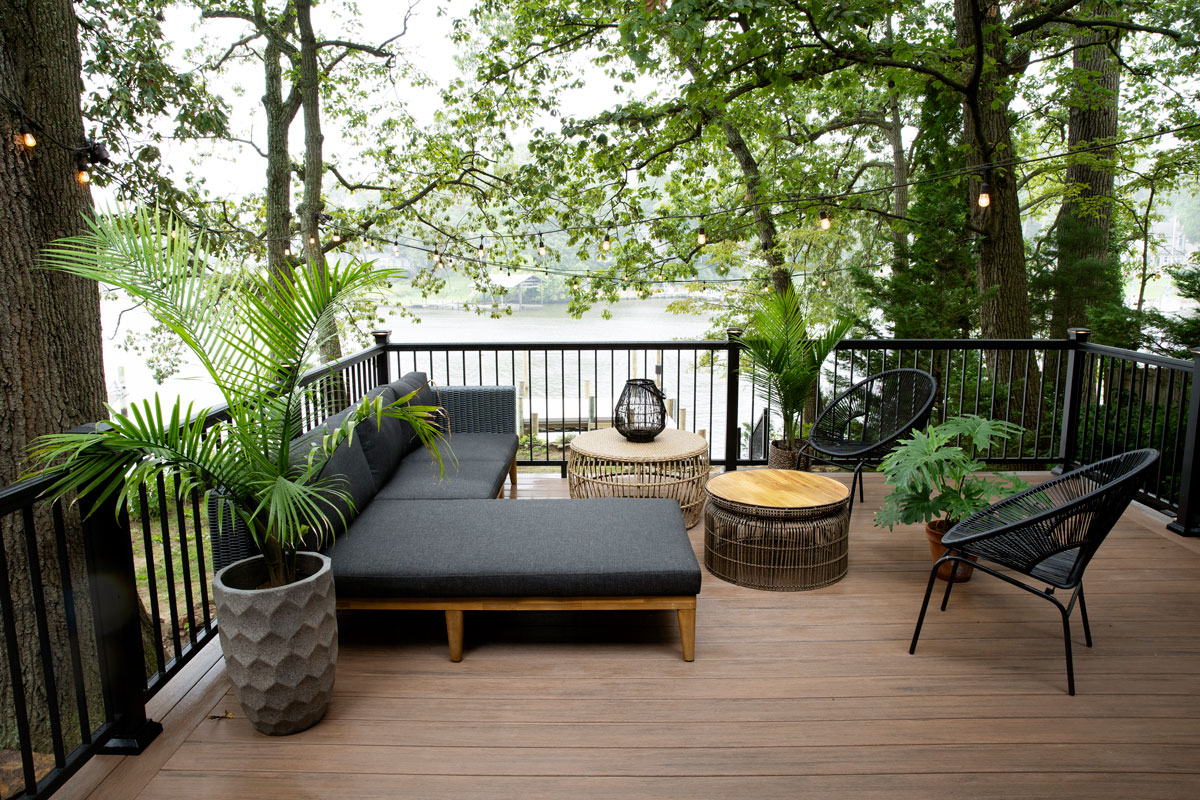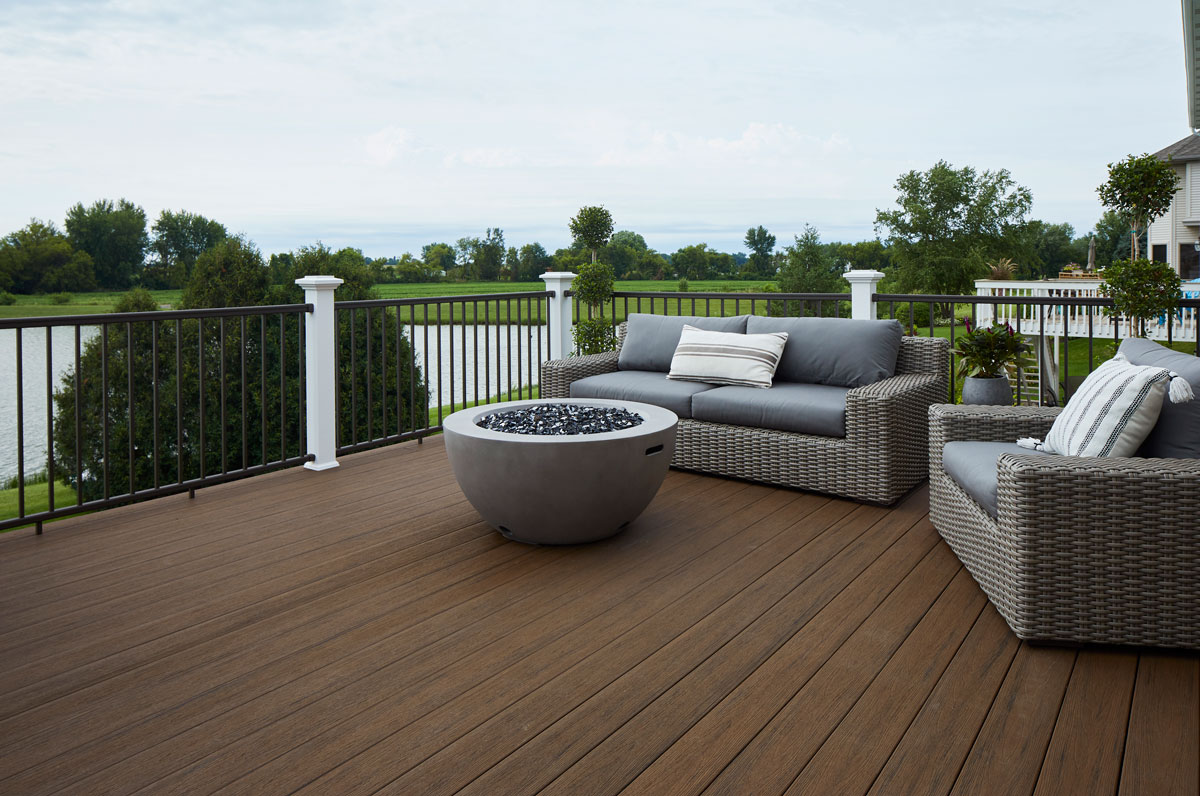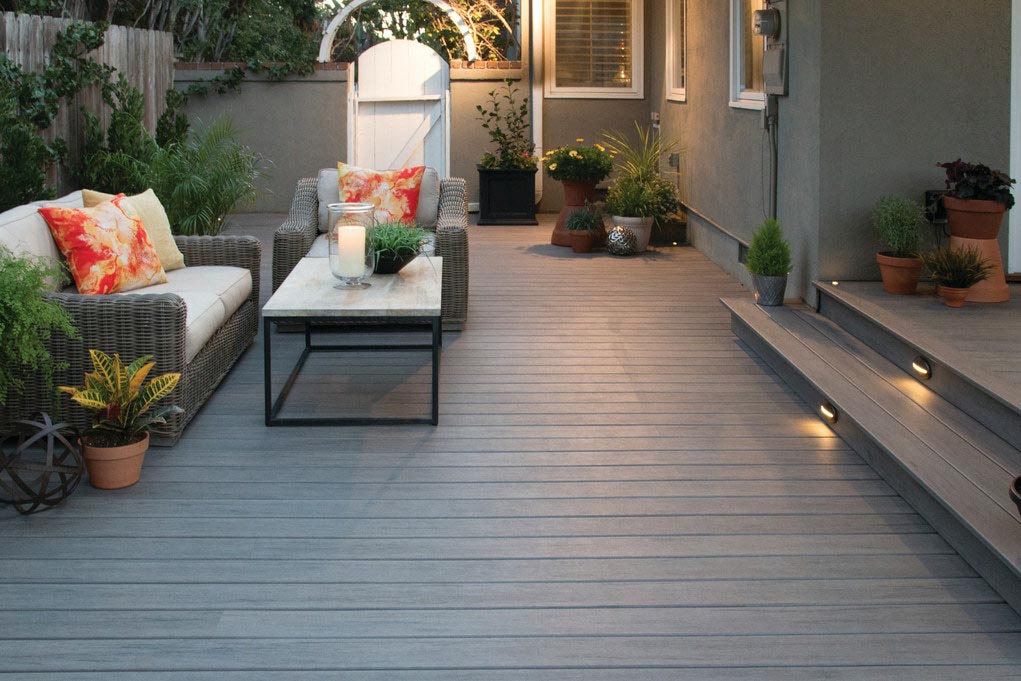When composite decking was introduced as an alternative material to wood in the 1990s, it wasn’t without flaws. The boards were made by using pressure and heat to mold a combination of plastic and natural wood waste into rigid forms. However, these first-generation boards ended up succumbing to many of the same issues wood did: they faded quickly and were not still susceptible to rot and mildew, resulting in a loss in structural integrity over time. In addition to these functional issues, they also featured overly simplified wood patterns and limited stain options, which basically made them a design faux-pas.

The Vintage Collection, one of TimberTech’s “Designer Series” of decking, features natural colors with a subtle wire-brushed, low-gloss finish for an authentic wood look.
To fight these issues, companies like TimberTech have led the charge with a new generation of boards: capped composite decking. The “cap” is a protective shell that encases the core of the board and holds the color and finish. The effects of the cap are two-fold. For one, it helps strengthen and extend the lifespan of the boards. But aesthetic-wise, it provides a blank canvas in which to craft wood designs and explore other color options.
TimberTech’s caps are made of a high-performance proprietary polymer blend to protect against moisture, UV rays, and other erosion factors while dramatically elevating its appearance. To achieve a look and feel similar to real wood, TimberTech uses a multi-stage blending system that creates subtle highlights and lowlights. Then the boards are embossed with various grain patterns, which range from a traditional wood grain to the look of quarter-sawn hardwoods, wire-brushed finishes, and even reclaimed lumber. From there, colors and widths provide further customization.

Inspired by reclaimed wood, the heavy wire-brushed, low-gloss finish on the boards in the Reserve Collection highlight the classic cathedral wood grain.
While TimberTech is intentional about the exterior design and appearance of their composite decking products, they are equally so with what goes inside: the company actively sources recycled materials and reintroduces scraps from their own manufacturing to make their capped decking boards. In 2020, the company diverted roughly 400 million pounds of waste and scrap from landfills and re-used approximately 99% of their internal scrap.
In order to provide a consistent and dependable use of materials, TimberTech has eight recycling facilities across the United States, including one that specializes in recycling polyethylene in Wilmington, Ohio. And, of course, these are sustainable too. Closed-loop filtration allows TimberTech to recycle up to 97% of the water used by their largest facilities each year.
While recycling waste, TimberTech decks have also diverted reliance on our natural resources by saving more than a million trees since 2015. Nature-inspired decks that are also good for nature? We’re on board.

Every board in the Legacy Collection is unique with a complex blend of hues, natural board-to-board color variation, and a hand-scraped texture.